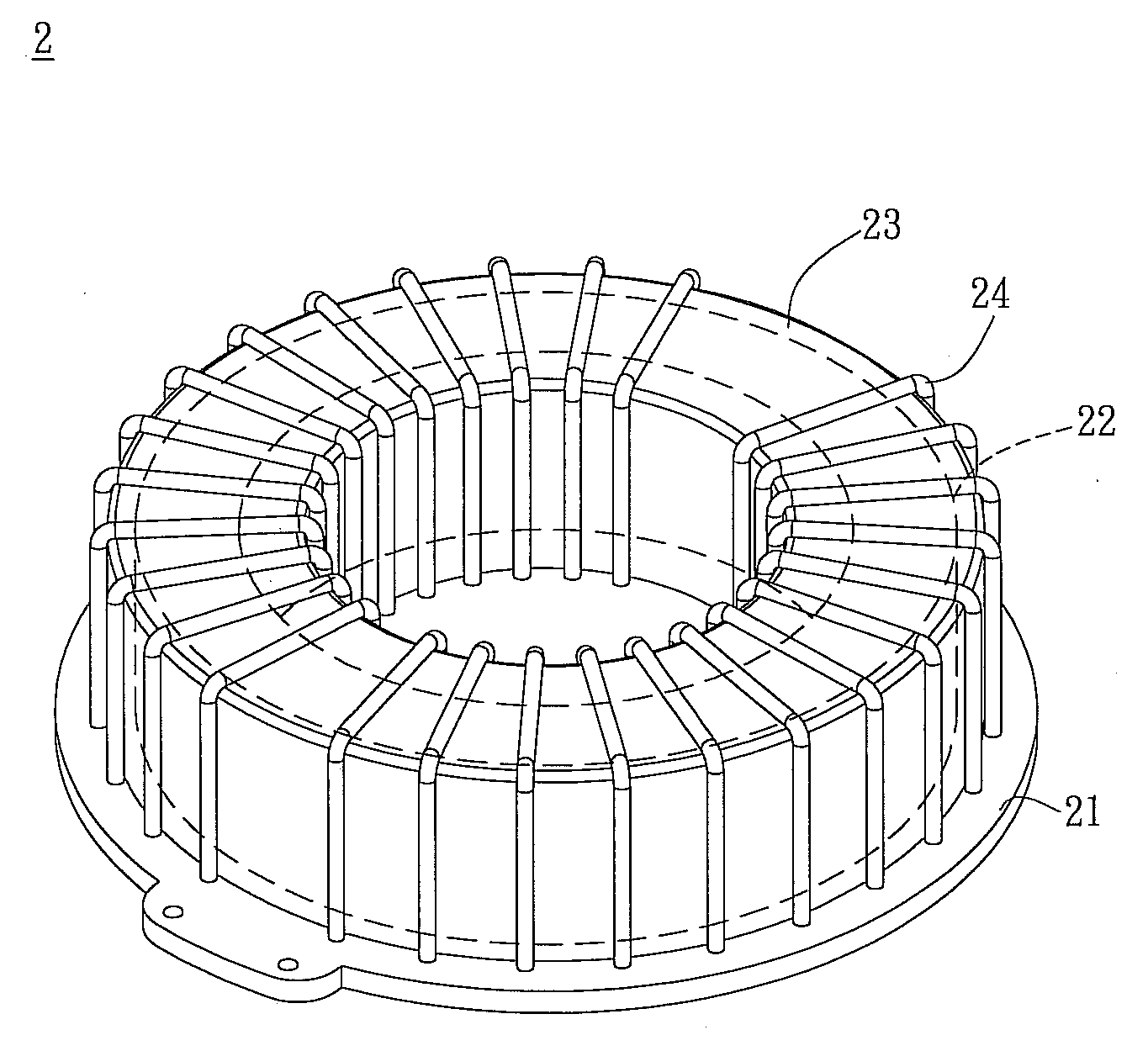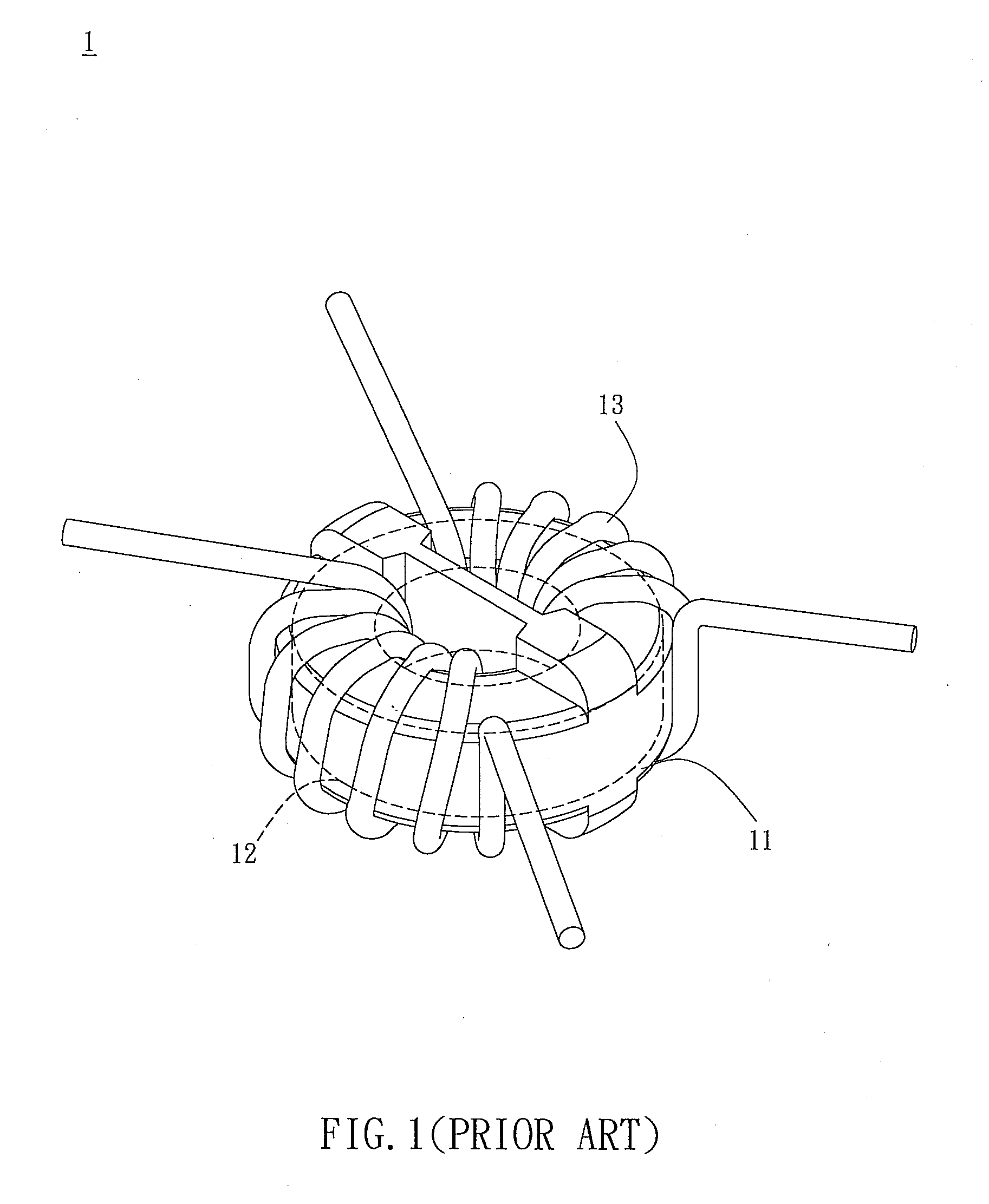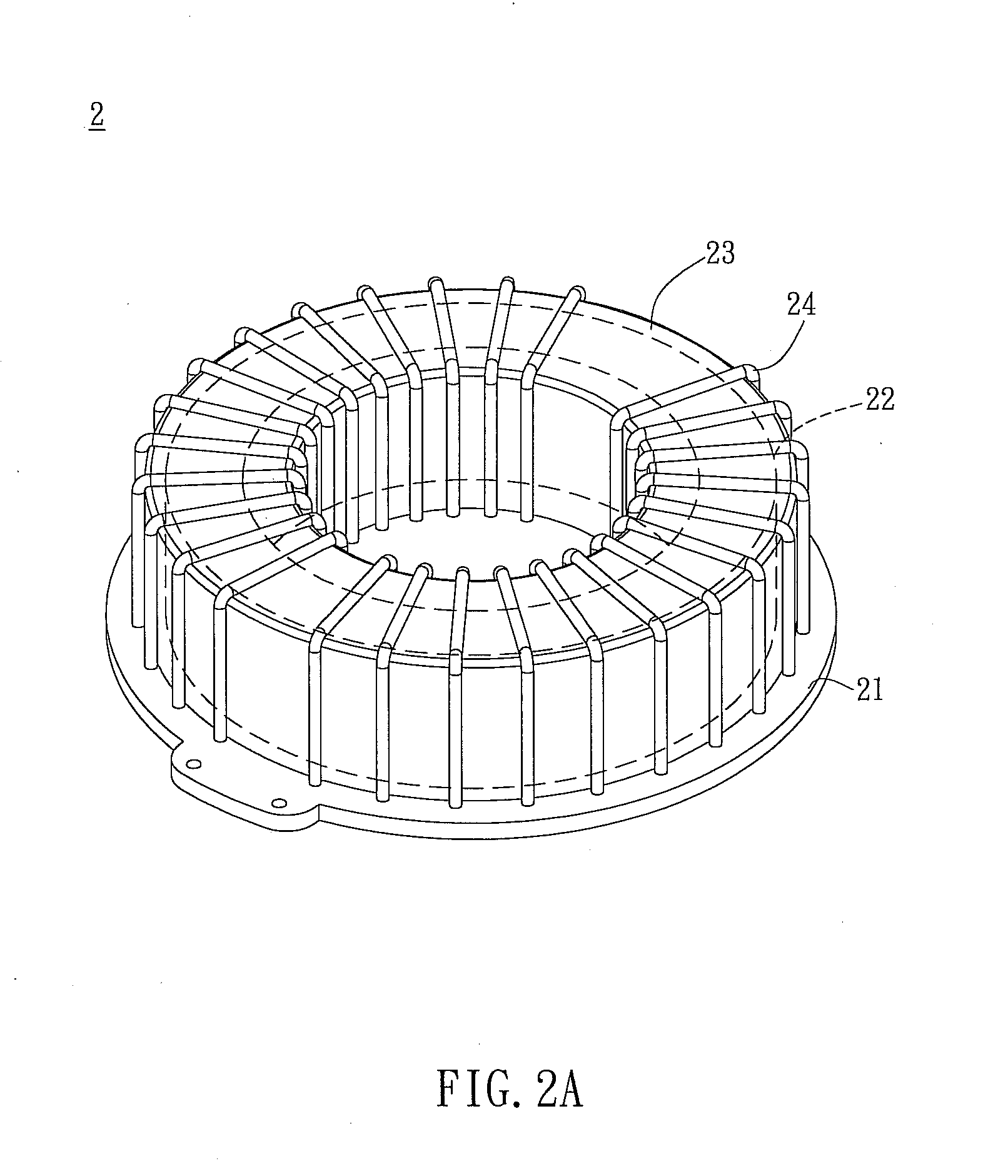Magnetic device
a magnetic device and insulating layer technology, applied in the direction of transformers/inductance coils/windings/connections, using reradiation, instruments, etc., can solve the problems of increasing the variation of noise restraining ability, scratching the insulating layer of enameled wires, and the winding distribution of wires may be non-uniform, so as to reduce the affection of magnetic devices, reduce manufacturing costs, and eliminate winding variations
- Summary
- Abstract
- Description
- Claims
- Application Information
AI Technical Summary
Benefits of technology
Problems solved by technology
Method used
Image
Examples
first embodiment
[0025]With reference toFIGS. 2A to 2D, a composite inductor 2 according to a first embodiment of the present invention includes a circuit board 21, a magnetic induction element 22, an insulating structure 23 and a plurality of conductive wire segments 24. The circuit board 21 can be a printed circuit board and includes at least one conductive layer 211 as shown in FIG. 2C. The material of the conductive layer 211 includes gold, silver, copper, tin or alloys thereof. In the embodiment, the conductive layer 211 is, for example but not limited to, a copper layer.
[0026]For example, the magnetic induction element 22 is annular, elliptic or rectangular, and the material of the magnetic induction element 22 includes iron, cobalt, nickel or alloys thereof. In the embodiment, the magnetic induction element 22 is an annular iron core and is disposed on the circuit board 21. The insulating structure 23 is, for example but not limited to, an insulating housing for covering the magnetic inductio...
second embodiment
[0029]With reference to FIG. 3, a composite inductor 3 according to a second embodiment of the present invention includes a circuit board 31, a magnetic induction element 22, an insulating structure 23 and a plurality of conductive wire segments 34.
[0030]The different between the composite inductors 2 and 3 is in that the conductive wire segments 34 of the composite inductor 3 are disposed on the circuit board 31, which has a plurality of conductive layers 311. In the embodiment, two ends of each conductive wire segment can be disposed on different conductive layers, respectively (not shown). The conductive wire segments 34 are electrically connected to the conductive layers 311 to form a coil. Accordingly, the current durability of the composite inductor 3 can be increased by the increased area of the total conductive layers 311.
third embodiment
[0031]With reference to FIG. 4, a composite inductor 4 according to a third embodiment of the present invention includes a circuit board 41, a magnetic induction element 22, an insulating structure 23, a plurality of conductive wire segments 44 and a plurality of conductive wire segments 45.
[0032]The difference between the composite inductors 4 and 2 is in that the conductive wire segments 44 and 45 of the composite inductor 4 are disposed on the circuit board 41, which has a plurality of conductive layers 411 and 412. In the embodiment, the number of the conductive wire segments 44 is the same as that of the conductive wire segments 24 of the first embodiment, and the conductive wire segments 45 are newly added. The conductive wire segments 411 and 412 are connected to each other through at least one via (not shown), so that the conductive wire segments 44 and 45 can be electrically connected to the conductive layers 411 and 412 so as to form a coil. Accordingly, the winding densit...
PUM
 Login to View More
Login to View More Abstract
Description
Claims
Application Information
 Login to View More
Login to View More - R&D
- Intellectual Property
- Life Sciences
- Materials
- Tech Scout
- Unparalleled Data Quality
- Higher Quality Content
- 60% Fewer Hallucinations
Browse by: Latest US Patents, China's latest patents, Technical Efficacy Thesaurus, Application Domain, Technology Topic, Popular Technical Reports.
© 2025 PatSnap. All rights reserved.Legal|Privacy policy|Modern Slavery Act Transparency Statement|Sitemap|About US| Contact US: help@patsnap.com



